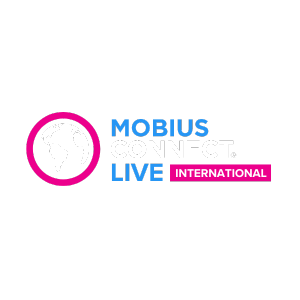Description
This presentation will cover the following topics
- What is a Mode of Vibration? A description of resonant vibration in a structure or mechanical system
- What causes resonant vibration? Trapped energy within the boundaries
- Vibration of a bell versus a sand bag
- Each mode of vibration has three parts, natural frequency, damping coefficient, mode shape
- What is a mode shape?
- Fundamental Law of Modal Analysis (FLMA): All vibration is a summation of mode shapes
- All vibration is described by Newton’s second Law, F = MA
- Conclusions from Newton’s second Law
- Things vibrate when forces are applied to them
- Things resonate because on interactions between their internal mass (inertia) & stiffness (restoring) forces
- Resonant vibration remains when all forces are removed
- Vibration principles from the FLMA
(All of these principles will be demonstrated with examples)
- All time based vibration is a summation of mode shapes
- All frequency-based vibration is a summation of mode shapes
- All order-based vibration is a summation of mode shapes
- All mode shapes are a summation of mode shapes
- Any mode can be excited at any frequency
Bio
 Mark Richardson received his B.S. (1964), M.S. (1966), and Ph.D. (1970), all in Mechanical Engineering from the University of Notre Dame, Notre Dame, Indiana. In 1969, Mark joined Systems Control, Inc., Palo Alto, California, as a consulting engineer. At SCI, he worked on client problems in the areas of dynamics & control systems, operations research, and systems analysis. In 1973, he joined Hewlett Packard Co. in Santa Clara, California. As an engineering project leader, he directed the development of the first commercially available FFT-based modal testing system, introduced by Hewlett Packard in 1974. Later, he directed the development of the first dedicated modal testing instrument, the Hewlett Packard 5423A Structural Dynamics Analyzer. The 5423A became one of HP’s top revenue producing instruments during the 1979 to 1984 years. In 1979, he co-founded Structural Measurement Systems, Inc. and was President and CEO. SMS marketed mechanical testing software. The popular StarModal and StarStruct packages were used for analyzing structural noise and vibration problems. By 1989, SMS had over 40 employees and a worldwide sales force. In May 1989, SMS was sold to GenRad, Inc., Concord, Massachusetts. In 1991, Mark co-founded Vibrant Technology, Inc. in Jamestown, California, and is currently its President and CEO. In 2016, the company moved its headquarters from California to Centennial, Colorado. Since its founding, Vibrant has developed and sold the ME’scope family of post-test noise and vibration analysis software tools. ME’scope is sold worldwide through a network of sales representatives and OEM suppliers.
Mark Richardson received his B.S. (1964), M.S. (1966), and Ph.D. (1970), all in Mechanical Engineering from the University of Notre Dame, Notre Dame, Indiana. In 1969, Mark joined Systems Control, Inc., Palo Alto, California, as a consulting engineer. At SCI, he worked on client problems in the areas of dynamics & control systems, operations research, and systems analysis. In 1973, he joined Hewlett Packard Co. in Santa Clara, California. As an engineering project leader, he directed the development of the first commercially available FFT-based modal testing system, introduced by Hewlett Packard in 1974. Later, he directed the development of the first dedicated modal testing instrument, the Hewlett Packard 5423A Structural Dynamics Analyzer. The 5423A became one of HP’s top revenue producing instruments during the 1979 to 1984 years. In 1979, he co-founded Structural Measurement Systems, Inc. and was President and CEO. SMS marketed mechanical testing software. The popular StarModal and StarStruct packages were used for analyzing structural noise and vibration problems. By 1989, SMS had over 40 employees and a worldwide sales force. In May 1989, SMS was sold to GenRad, Inc., Concord, Massachusetts. In 1991, Mark co-founded Vibrant Technology, Inc. in Jamestown, California, and is currently its President and CEO. In 2016, the company moved its headquarters from California to Centennial, Colorado. Since its founding, Vibrant has developed and sold the ME’scope family of post-test noise and vibration analysis software tools. ME’scope is sold worldwide through a network of sales representatives and OEM suppliers.
